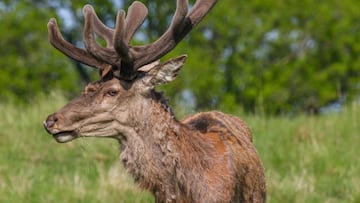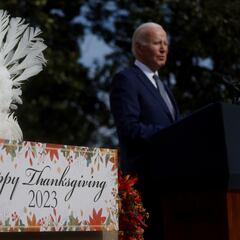What is Zombie Deer Disease? Warning not to approach animals in Yellowstone Park
Cases of chronic wasting disease, known as zombie deer disease have been detected in Yellowstone Park. Authorities warn not to approach the animals.

Yellowstone National Park stands out for being one of the oldest and most famous recreation areas in the United States. Much of the reservation is located in Wyoming and extends into parts of Idaho and Montana.
Across more than 2.2 million acres, Yellowstone Park offers visitors a variety of opportunities to observe wildlife at close quarters. However, alarm bells have been raised in recent days as authorities have warned visitors to stay away from deer, moose and elk. This is due to the first recorded case of chronic wasting disease, popularly known as ‘Zombie Deer Disease’.
Wyoming Game and Fish has confirmed the presence of CWD in WY's Deer Hunt Area 155. In an effort to keep hunters informed Game & Fish announces when CWD is found in a new hunt area. Read the full story: https://t.co/KFlZQ7H6dU pic.twitter.com/eioMXwiZFr
— Wyoming Game & Fish (@WGFD) October 12, 2022
Warning not to approach animals in Yellowstone Park
According to a statement issued by Yellowstone National Park and the Wyoming Game and Fish Department, an adult mule deer buck died in mid-October from chronic wasting disease.
“The WGFD recently confirmed the presence of chronic wasting disease (CWD) in the carcass of an adult mule deer buck found near Yellowstone Lake in the southeastern section of the park. This is the first confirmed positive detection of the disease in Yellowstone National Park. The mule deer buck was originally captured by WGFD staff near Cody, Wyoming, in March 2023 as part of a population dynamics study and fitted with a GPS collar. The collar signaled the animal died mid-October 2023. In coordination with Yellowstone staff, WGFD located the carcass on the Promontory, a landmass that separates the South and Southeast arms of Yellowstone Lake and collected samples for testing. The samples tested positive for CWD based on multiple diagnostic tests performed at WGFD’s Wildlife Health Laboratory,” the statement read.
You might also enjoy
In the same statement, the authorities call on visitors to avoid approaching the animals and ask them to inform a National Park Service employee if they see or are aware of any animal which appears unwell or dead.
“Avoid touching or handling sick or dead wild animals as some disease-causing organisms can be passed between wild animals and people. NPS employees trained in wildlife health use specific protective measures to safely deal with a wild animal that may have died of disease,” they note on their website.
(News Release) Yellowstone and the Wyoming Game and Fish Department recently confirmed the presence of chronic wasting disease in the carcass of an adult mule deer buck found near Yellowstone Lake.
— Yellowstone National Park (@YellowstoneNPS) November 14, 2023
Full release at: https://t.co/aiJekAFRNO pic.twitter.com/WCdJPMUIPB
What is ‘zombie deer’ disease?
After the confirmation of the first case of chronic wasting disease in Yellowstone Park, questions have been raised about the condition and, most curiously, why it is known as Zombie Deer Disease’.
According to National Geographic, chronic wasting disease is a disorder that gradually destroys the nervous system of animals, causing motor incoordination, weight loss and apathy, giving the effect of a zombie.
Related stories
Transmission occurs through proteins called prions, “which spread among animals through body fluids” and which are “a family of rare neurodegenerative disorders that affect animals. Transmission is even easier when you consider that mule deer eat small amounts of soil every day, for the important minerals it contains. But some mouthfuls contain not just minerals, but prions too”.
The Wyoming Game and Fish Department assures that currently, “There is no evidence that CWD can infect humans or domestic animal species. However, it is recommended that tissues from CWD-infected animals not be consumed.”

